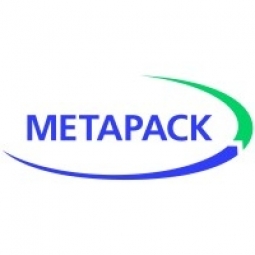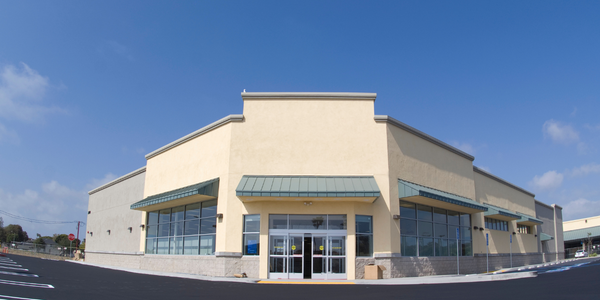Customer Company Size
Large Corporate
Region
- Europe
Country
- Netherlands
Product
- MetaPack Manager
- Track and Trace
Tech Stack
- Ecommerce
- Warehouse Management System
- Transport Management System
Implementation Scale
- Enterprise-wide Deployment
Impact Metrics
- Productivity Improvements
- Customer Satisfaction
Technology Category
- Platform as a Service (PaaS) - Connectivity Platforms
Applicable Industries
- Apparel
Applicable Functions
- Logistics & Transportation
- Warehouse & Inventory Management
Use Cases
- Supply Chain Visibility
- Inventory Management
Services
- System Integration
- Cloud Planning, Design & Implementation Services
About The Customer
CB Fashion is a logistics service provider based in the Netherlands. The company serves a wide range of fashion brands and operates over 80,000 square meters of warehouse space. The warehouse is fully equipped for hanging garments and flat pack. CB Fashion is engaged in daily distribution and transport throughout Benelux, Europe, and abroad. The company has 1,000 employees across four locations. The company's clientele is very demanding, requiring CB Fashion to constantly adapt and improve its services.
The Challenge
CB Fashion, a logistics service provider for a wide range of fashion brands, was looking to streamline its operations and expand its product offering. The company was facing challenges in meeting the demands of its fast-paced customer base. The IT team was burdened with tasks that could be outsourced to a specialist firm. The company wanted more flexibility in setting up new carriers and new carrier delivery options to meet the demands of its customers. They were looking for a multicarrier plug-in tool that could help them achieve this flexibility without having to develop it themselves.
The Solution
CB Fashion turned to MetaPack for a solution. MetaPack is internationally available, the worldwide market leader, and very fashion-oriented. It offers 24/7 support, which was important for CB Fashion. MetaPack was already connected to CB Fashion's management system, which made the implementation easier. With MetaPack, CB Fashion was able to quickly integrate new carriers, giving them the flexibility to respond immediately to the needs of its clientele. The company decided to generate labels directly from MetaPack Manager, estimating that approximately 1 million labels will be produced in this way. MetaPack Track and Trace enabled CB Fashion to go above and beyond customer expectations in terms of delivery traceability.
Operational Impact
Quantitative Benefit

Case Study missing?
Start adding your own!
Register with your work email and create a new case study profile for your business.
Related Case Studies.

Case Study
Fire Alarm System and Remote Monitoring Sytem
Fire alarm systems are essential in providing an early warning in the event of fire. They help to save lives and protect property whilst also fulfilling the needs of insurance companies and government departments.Fire alarm systems typically consist of several inter-linked components, such as smoke detectors, heat detector, carbon monoxide, manual call points, sounders, alarm and buzzer. The fire alarm system should give immediate information in order to prevent the fire spread and protect live and property.To get maximum protection a shoe manufacturer in Indonesia opted for a new fire alarm system to monitor 13 production sites spread over 160 hectars. Although the company had an existing fire alarm system, it could not be monitored remotely.It was essential that the new system would be able to be monitored from a central control room. It needed to be able to connect to the existing smoke detector and manual call point. Information should be easily collected and passed on to the Supervisory Control and Data Acquisition (SCADA) system. Furthermore, the system should have several features such as alarm management, auto reporting, being connected to many client computers without additional cost, and run 24/7 without fails. The company also needed a system which could be implemented without changing the architecture of the existing fire alarm system.

Case Study
IoT Applications and Upgrades in Textile Plant
At any given time, the textile company’s manufacturing facility has up to 2,000 textile carts in use. These carts are pushed from room to room, carrying materials or semi-finished products. Previously, a paper with a hand-written description was attached to each cart. This traditional method of processing made product tracking extremely difficult. Additionally, making sure that every cart of materials or semi-finished products went to its correct processing work station was also a problem. Therefore, the company desired an intelligent solution for tracking assets at their factories. They also wanted a solution that would help them collect process data so they could improve their manufacturing efficiency.

Case Study
Retailer Uses RFID Scanner to Improve Efficiency
Patrizia Pepe wished to improve the logistics of their warehouse: accepting incoming goods from their production sites, movement of items throughout
the warehouse, and packaging of goods for distribution to the retail locations. They initially tried to use barcodes for this function. Because barcodes must be individually scanned within a line-of-sight, the acceptance of goods coming into the warehouse was too time consuming. Working with the University of Florence, Patrizia Pepe instituted a five-month pilot project beginning in August of 2009 to test the validity of an RFID solution. The pilot involved tagging of about 60,000 items for the second seasonal collection, and convinced the company to move forward with tagging all items.

Case Study
Monitoring and Controlling Automatic Mixing and Dispensing Machines
As technology advances, textile manufacturing has been transformed from a labor-intensive to a partially or fully automated industry. Automation is significant in all segments of textile production - from spinning to printing, and textile machinery manufacturers are constantly searching for new technologies and automation processes will increase the productivity of their machines. The color paste mixing and dispensing machine is an essential part of the printing and dyeing process. With the advantage of automatically computerized controls and database management, the system can significantly improve its dispensing precision, working efficiency and production quality as well as reducing material consumption.





